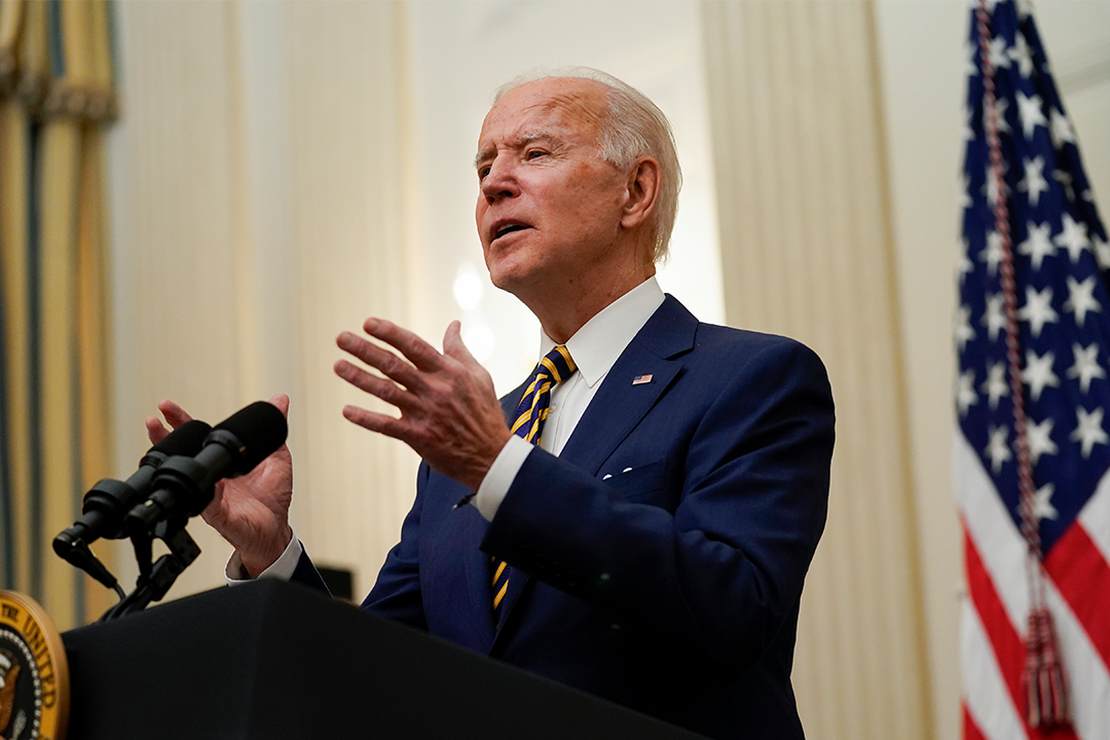President Biden has signed more than 30 Executive Orders since his inauguration, but his rhetoric or priorities aren’t resonating with voters. While much of what he has done was entirely predictable, some groups, like labor unions, still seem astonished.
Biden’s first Daily Presidential Tracking Poll put him into negative approval territory at -2. It has gotten worse. On Monday, he dropped to -4. Tuesday, he moved down again to -5. This trend is quite a feat. President Trump started at +2 and rose to +13 in the first days of his presidency. He began to decline with an onslaught of negative and cynical coverage regarding the so-called Muslim ban.
Biden has received very little negative coverage, with much of the corporate media applauding his early moves because they align with the liberal gentry’s priorities. However, even groups that endorsed him have indicated they are disappointed in his energy policy decisions and the Executive Order on gender identity. That has not stopped the flurry of executive actions, though. Yesterday was “equity day,” and President Biden signed additional deeply unpopular orders.
The implementation of Biden’s immigration order was halted, for now, thanks to a lawsuit from Texas Attorney General Ken Paxton. Before the inauguration, caravans began to form in Central America, and voters wanted them stopped at the border. While full implementation of Biden’s order would virtually eliminate all immigration enforcement, likely voters’ desire for a more expansive immigration system is declining rapidly.
Biden rolled back the ban on critical race theory training, referring to it as diversity and sensitivity training. This characterization is misleading. The training divides people into oppressor groups and oppressed groups based on immutable characteristics such as race and gender. As City Journal writer Christopher Rufo has documented, many of these programs are reminiscent of struggle sessions in authoritarian regimes.
In addition, Biden disbanded the 1776 Commission aimed at putting more patriotic content into America’s classrooms. While the first version was not perfect, the goal was to celebrate America’s accomplishments while realistically conveying the country’s mistake in an appropriate historical context. According to Rasmussen, at the time of President Trump’s Mount Rushmore speech, 57% of likely voters agreed with this statement:
The only path to unity is to rebuild shared national identity focused on common American values and virtues of which we have plenty. This includes restoring patriotic education in our nation’s schools, where they are trying to change everything that we have learned.
Likely voters also agreed with the following statement by President Trump at a rate of nearly three out of four:
Together we are part of one of the greatest stories ever told – the story of America. It is the epic tale of a great nation whose people have risked everything for what they know is right.
President Unity Joe Biden has a much darker view of the nation. He seems to be moving back to the highly criticized 1619 Project. In his remarks on Equity Day, he characterized America as systemically racist, painting a very gloomy picture:
Systemic racism “has plagued our nation for far, far too long,” President Biden says. Today, he signed 4 executive actions as part of his push for racial equity. https://t.co/sT4S4cdnJb pic.twitter.com/lXvqudECz4
— CNBC (@CNBC) January 26, 2021
Perhaps that is why at the end of week one, only 22% of Americans felt confident that Biden would unify the country while 24% had no confidence in Biden at all.
Biden’s handlers’ failure to slow the roll of these policies is another sign that Democrats believe there is majority support for a profoundly progressive policy agenda. Surveys of voters do not support this view, and a declining approval rating as these policies roll out should be a signal to them. Unless, of course, they are more concerned with power than unity.



